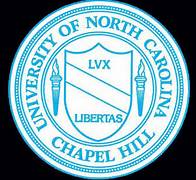 (NOTE: The University of North Carolina sent out the following release Thursday questioning claims of CNN with an analysis of its own.)
(NOTE: The University of North Carolina sent out the following release Thursday questioning claims of CNN with an analysis of its own.)
97% of UNC student-athletes meet CNN reading skills threshold:
8-year admissions analysis questions claims in network news story
Last week, CNN reported on reading skills of student-athletes at U.S. public universities including the University of North Carolina at Chapel Hill. The story used a CNN-defined threshold for student-athletes being “college-literate” based on results from SAT and ACT college entrance exam scores (400 on SAT Critical Reading or Writing; 16 on ACT). The network said it consulted with experts in different fields to develop the threshold.
CNN did not ask the University for SAT or ACT data, instead relying on observations provided by a UNC employee who did not represent the campus in its report.
An analysis conducted by the University’s Office of Undergraduate Admissions found that all 154 special-talent student-athletes – 100 percent – who enrolled in fall 2013 met CNN’s reading skills threshold. That first-year class included 35 student-athletes recruited for football and men’s and women’s basketball. (CNN did not examine 2013 information.)
The Office of Undergraduate Admissions used CNN’s definition to analyze UNC’s own SAT and ACT data for special-talent student-athletes enrolled as first-year students through policies and procedures established by the UNC Board of Trustees, faculty and the admissions office.
That analysis found:
Between 2004 and 2012, the same time period examined by CNN, UNC-Chapel Hill enrolled 1,377 first-year student-athletes through the special-talent policies and procedures. More than 97 percent (1,338) of those students met the CNN threshold. Thirty-nine students (2.83 percent) did not meet the threshold.
Twenty-three of the 39 students (59 percent) who did not meet the CNN threshold have graduated from the University or remain enrolled and in good academic standing. Another 11 students (28 percent) left the University academically eligible to return. The other five students left the University and would have to restore their academic eligibility in order to return.
In summary, 34 of the 39 students (87 percent) who did not meet the CNN threshold either graduated from the University, remain enrolled and in good academic standing, or left the University academically eligible to return.
Of the student-athletes who enrolled between 2004 and 2012 under the special-talent policies, 341 were recruited for football, men’s basketball and women’s basketball. More than 90 percent (307) of these students met the CNN threshold. Thirty-four of these student-athletes (9.97 percent) did not meet the threshold.
Of the 34 students recruited for football, men’s basketball and women’s basketball who did not meet the threshold, 20 students (59 percent) either have graduated from the University or remain enrolled and in good academic standing. Another 10 students (29 percent) left the University academically eligible to return. The other four students left the University and would have to restore their academic eligibility in order to return.
In summary, 30 of these 34 students (88 percent) either graduated from the University, remain enrolled and in good academic standing, or left the University academically eligible to return.
“We evaluate every student as carefully as we know how,” said Stephen Farmer, vice provost for enrollment and undergraduate admissions. “The primary criterion for admission for all students, including student-athletes, is the student’s capacity to succeed academically at the University. We only admit students who we believe have the capacity to succeed.”
In keeping with University Board of Trustees policy, and guidance from the Faculty Advisory Committee on Undergraduate Admissions, Farmer said the Office of Undergraduate Admissions evaluates every candidate individually, comprehensively and holistically. These evaluations rely on quantitative and qualitative data and information. The quantitative measures include results from standardized tests (SAT or ACT with Writing).
“We pay careful attention to test results,” Farmer said. “But we do not make final admissions decisions based on test scores alone – not for any student, and not for any student-athlete.”
– News release